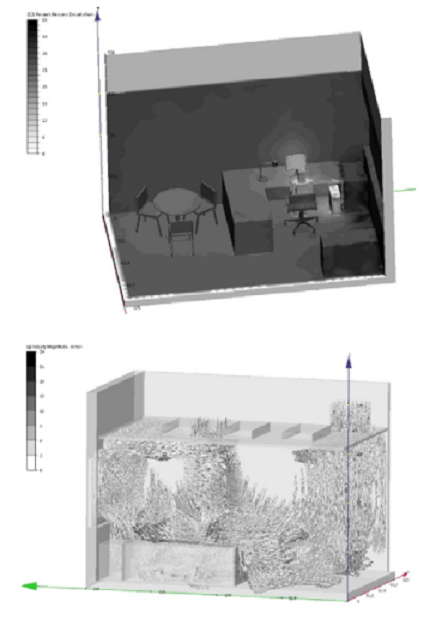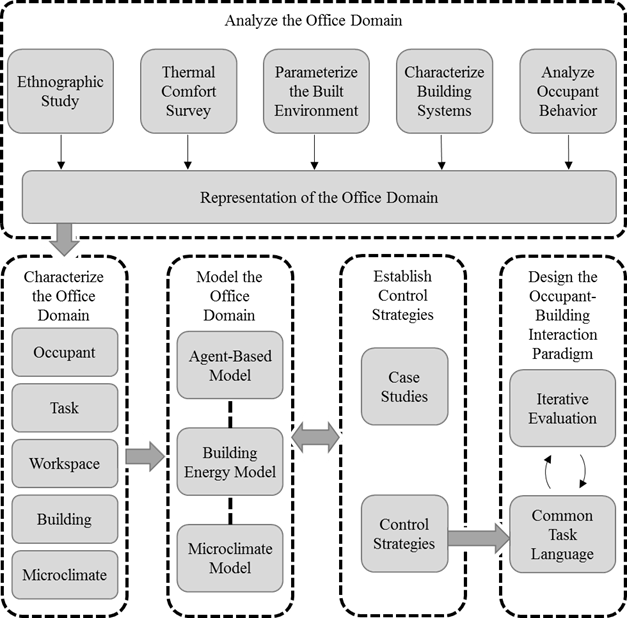The objective of this research is to provide individual occupants the ability to modify their local workspace while improving task performance, occupant satisfaction, and building energy demand. Despite the fact that control is good for occupants, occupants tend to be left out of the control loop. A building can only be designed for the idealized occupant performing an idealized task in an idealized work. Occupants, tasks, buildings, and the microclimate would need to conform to design standards 100% of the time. Since it is unlikely that any of these would behave in an idealized fashion most of the time, occupants need to have effective control. Therefore, the research question is how and what control should be given to occupants to improve their task performance and satisfaction without hindering building performance.
The conflict between individual control and building performance produces significant challenges for decision-making regarding building control interactions. An approach to building control interactions aligned with the building’s purpose – to support users’ tasks – results in a more meaningful interaction between the user and controls. A five step approach is used to develop a new task-representative interface: analyze the office domain, characterize the office domain, model of the office domain, establish control strategies, and design the occupant-building interaction paradigm.
The conflict between individual control and building performance produces significant challenges for decision-making regarding building control interactions. An approach to building control interactions aligned with the building’s purpose – to support users’ tasks – results in a more meaningful interaction between the user and controls. A five step approach is used to develop a new task-representative interface: analyze the office domain, characterize the office domain, model of the office domain, establish control strategies, and design the occupant-building interaction paradigm.

This work brings human factors to control design for commercial office buildings. The purpose is to support task performance while maintaining efficient building energy performance and occupant satisfaction. With task central to the control design concept, building simulation that has both the structure and behavior of commercial office building, occupants, and microclimate is developed, test, and evaluate control strategies that support occupant tasks. Once the control strategies are established, an occupant-building interaction paradigm can be designed to enable an occupant to customize their workspace environment through control of the building systems. The paradigm includes a common language that is understandable to occupants and parsable to the building systems, controls strategies that coordinate building systems for optimal building performance, and an interface that guides occupants on the “best” solution to their needs.

